SUPERVERSIVE: Spider-Man: No Way Home makes me angry
Tuesday , 16, May 2023 Uncategorized 2 CommentsThe title says it all.
“Spider-Man: No Way Home” was not a movie I saw on release. I saw it at home, months later. And in truth, it made me mad. It made me mad not because it was bad. It made me mad because it was really, really good. It was exactly as good as everyone said it was.
All of my issues with the previous two MCU Spider-Man films were just…gone. They weren’t there anymore. Did you absolutely despise this new look version of MJ who had absolutely nothing in common with the character she was named after? I did. I loathed her. She and Peter had no chemistry, she was boring, she was drab, she was unlikable.
So what did NWH do? Cut her?
No. Even better. They fixed her.
I still can’t quite believe how invested I was in MJ and Peter’s relationship in this film. And it was so simple! It didn’t require any massive character rewrites or major retcons.
All they had to do – literally, all they had to do – was have MJ be supportive.
That’s it. That’s all. Peter is struggling, MJ is there for him. Peter is grieving, MJ is a shoulder to cry on. Peter is in trouble, MJ does her best to help. She gets along with his friend and isn’t unpleasant. When Peter’s hero work gets in the way of their relationship she’s understanding.
That’s the only change they make to her character. And it works. It works brilliantly. At the end of the film, MJ, his girlfriend, and Ned, his friend, are the last people in the world he has any real connection to. They’re the last people he loves. And he has to give up his relationship with them. He has to make that sacrifice to put things right and to fix his mistakes.
And dammit, it meant something. The sacrifice was real, it mattered. I felt it, because by the end of the movie I was rooting for Peter and MJ.
Considering how I felt about this relationship after the second film, that’s a remarkable change.
And there was more. There was a very distinct feeling in the previous MCU Spider-Man films of pulled punches. I’m thinking particularly of the end of “Far From Home”. Peter’s mistakes have probably led to the deaths of hundreds or even thousands of people, and sure, it was the villain’s fault more than him, and sure, his identity is revealed, but ultimately this was barely acknowledged if at all in order to maintain the light tone. Peter never grapples with the enormity of his mistakes, instead chalking it up to being tricked by Mysterio.
And sure, he was, and sure, he was a kid, but the whole point of Spider-Man is that he has great power and that gives him great responsibility, kid or not, and it never really felt like Peter ever took on the full weight of that responsibility.
That isn’t the case by the end of NWH. Peter feels like he’s sacrificed as much and more than he deserves. He’s not only lost people in the film, he voluntarily gives up virtually everything he has left by the time it ends.
This is partially to atone for his mistakes, sure, but to even get to this point Peter had to be actively trying to do good throughout the film, to help these villains from the previous movies in ways that they previously couldn’t be helped.
And why?
Because he can. He has the power. Thus he has the responsibility.
And this is to say nothing of the absolutely masterful way that the characters from the previous Spider-Man films were used. The restraint is really what I appreciate. They really only show up in the final third of the movie, and they give very limited details about what they’ve been up to.
But man, what they do give us is gold. It’s exactly what we DIDN’T get with Luke Skywalker and Han Solo in the Mouse Wars films. Tobey Maguire is a warm, comforting presence whose history informs his advice and his actions – and in one of the only tidbits we get about his life after the Raimi films we learn that he and MJ made it work.
Can you imagine? Presenting a beloved legacy character entirely positively, living a successful life?

And how about Andrew Garfield’s Spider-Man, and in the film’s best scene, having him resolve his primary bit of trauma, but without telegraphing it, without using flashbacks or having him explain it – just a scene of Garfield’s Spider-Man rescuing MJ then nearly breaking down? It’s very difficult for people who know about the ending of Amazing Spider-Man 2 not to be moved by this, and it’s done with remarkably little dialogue.
Look, the film isn’t perfect. You can argue, and I’d probably agree, that turning all of the flaws of the previous Spider-Man villains into literally curable diseases weakens them significantly as characters. The spell that kicks off the plot then ends the story is ridiculously powerful and raises questions about the world that the movie is not equipped to solve. While Marisa Tomei’s Aunt May was a very strong character it was missing that background of Christianity that guided her morals in the Raimi films.
But these are all nitpicks, minor things. The truth is this was a fantastic movie, a classic of the genre, somehow the best live action Spider-Man even over the terrific Spider-Man 2 and I would argue better than Spider-Verse as well. It’s simply a great superhero movie, well-written, well-acted, great action scenes, real weight and stakes…it’s as good as everyone said it was.
And THIS is what makes me so angry. They knew! They knew how to make a great Spider-Man movie all along!
They knew that MJ was an unlikable harpy, but they kept her anyway. They knew how to make Peter really suffer and sacrifice, but they didn’t include it anyway. They knew exactly how to add legacy characters to a new story while still respecting those stories, but they – and by “they” I just mean Hollywood writers – still utterly humiliated Luke and Han and Leia.
In short, they knew exactly how to make a good movie, and they just…didn’t. They just…don’t. When push comes to shove and the shareholders say they have to care about profit over ideology, they are absolutely capable of doing it.
Remember that when you see what Hollywood is putting out. They know exactly what they’re doing. They can be better than this.
They just don’t want to be.
Sensor Sweep: Blood Meridian, Roger Zelazny, Outlander, Modesty Blaise
Monday , 15, May 2023 Sensor Sweep Leave a commentD&D (Gronardia): In the interests of narrowing the scope of potential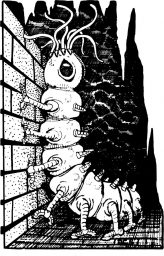 candidates for this list, I established a few rules for myself. First and most importantly, I would only select from monsters unique to Dungeons & Dragons. That means, mythological or folkloric monsters, like minotaurs or goblins, were excluded from consideration, even in cases where D&D’s version of them is idiosyncratic (e.g. kobolds). Second, monsters of a singular type, such as named demons or devils, were likewise excluded.
candidates for this list, I established a few rules for myself. First and most importantly, I would only select from monsters unique to Dungeons & Dragons. That means, mythological or folkloric monsters, like minotaurs or goblins, were excluded from consideration, even in cases where D&D’s version of them is idiosyncratic (e.g. kobolds). Second, monsters of a singular type, such as named demons or devils, were likewise excluded.
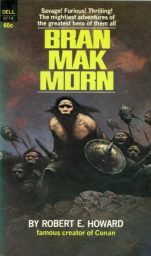 Robert E. Howard (Sprague de Camp Fan): “Men of the Shadows” first appeared in Bran Mak Morn, Dell Books, 1969. It was submitted to Weird Tales and rejected. Editor Farnsworth Wright advised Robert E. Howard that “… I fear I cannot use it in Weird Tales. It is too little of a “story,” despite the vigorous action in the opening pages. It is rather a chronicle of a tribe, a picture of the evolution of a race …”
Robert E. Howard (Sprague de Camp Fan): “Men of the Shadows” first appeared in Bran Mak Morn, Dell Books, 1969. It was submitted to Weird Tales and rejected. Editor Farnsworth Wright advised Robert E. Howard that “… I fear I cannot use it in Weird Tales. It is too little of a “story,” despite the vigorous action in the opening pages. It is rather a chronicle of a tribe, a picture of the evolution of a race …”
Fiction (Chimney Sweep Reader): I’ve been a fan of Jeff Guinn’s non-fiction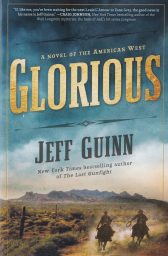 work ever since I read Go Down Together: The True, Untold Story of Bonnie and Clyde, his informative and exceedingly readable account of the Barrow Gang. When I saw he had written a couple of western fiction tales I wanted to try them so now I have. If this first one is a true indicator of the rest of the series, I can emphatically say, I will be reading every book in the series, and any other fiction he decides to produce in the future. Read More
work ever since I read Go Down Together: The True, Untold Story of Bonnie and Clyde, his informative and exceedingly readable account of the Barrow Gang. When I saw he had written a couple of western fiction tales I wanted to try them so now I have. If this first one is a true indicator of the rest of the series, I can emphatically say, I will be reading every book in the series, and any other fiction he decides to produce in the future. Read More
 XLZABK001 by Jon Zaremba is a brand new collection of stories in different genres. Jon has a description of himself at the end of this book:
XLZABK001 by Jon Zaremba is a brand new collection of stories in different genres. Jon has a description of himself at the end of this book:
“I retired as a musician with dozens of albums in my catalog, most of which were self-released. The majority of this collection’s contents was crafted as text interpretations of my musical works. With a sparse, at best, literary background, most of the imagery herein was inspired by music and film rather than the work of other authors. In art, including my own, I favor meaning over method, function over form, and substence over style.”
Contents: Read More
Science Fiction and Fantasy New Releases: 13 May 2023
Saturday , 13, May 2023 Uncategorized Leave a commentEvery week, the Castalia House Blog spotlights some of the many new releases in independent, pulp, and web novel-influenced science fiction and fantasy.
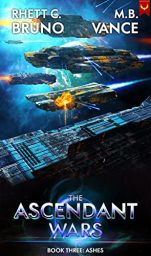 Ashes (The Ascendant Wars #3) – Rhett C. Bruno and M. B. Vance
Ashes (The Ascendant Wars #3) – Rhett C. Bruno and M. B. Vance
Humanity’s fate is in their hands…
The Lucians have faltered in their fight against the cruel Ascendant overlord, Cef. Now, a handful of survivors from a failed liberation campaign have been called to a Final Challenge in a madman’s arena.
For Rylan, Geeta, Scott and Aila, this may be their only opportunity to make peace with those they love. It will certainly be their last, best chance to save mankind from an endless cycle of genocidal slaughter.
Cef, of course, has saved his worst surprises for the war’s finale. Among them is a specter of the hated Lilith who offers a deal that the Soondarian Empire’s leader, Enri, can’t refuse. Whatever else happens, she’ll ensure everyone learns the price of spiting the devil. The only question is whether or not they’ll have the courage to pay it and free humanity.
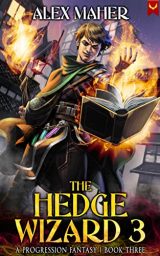 The Hedge Wizard #3 – Alex Maher
The Hedge Wizard #3 – Alex Maher
Scarred by the Remnant Realm, Hump must reclaim his soul…
Hump and his companions return to Sheercliff City to find a region plagued by monsters—bad news for most, but for a hedge wizard, it’s just good business.
With the gorger dead, and the bond with his unhatched dragon growing quickly, Hump looked forward to some ordinary adventures. Yet trouble finds him as the Inquisition arrives, accusing him of his master’s murder. It seems there is more to the old man’s death than he believed.
Countess Daston offers him a way out—in exchange for her protection, his party is enlisted to fight the monster surge. Warlocks walk the city streets, and newly spawned dungeons threaten the city’s existence. To survive, Hump must consolidate his strength and delve deeper into the potential of the Book of Infinite Pages.
The White Flame will be born.
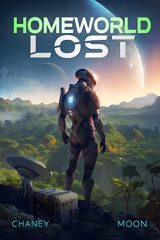 Homeworld Lost – J. N. Chaney and Scott Moon
Homeworld Lost – J. N. Chaney and Scott Moon
During a test flight for the world’s first warp engine, Major Noah Gantz is set to go down in the history books.
Despite years of training, the mission goes sideways, and instead of a quick trip to the moon and back, Noah’s ship is transported across the universe to stars unknown.
Stranded in space and on the brink of death, Noah is rescued by a sentient starship and its captain. To save his life, the ship’s own biomatter must replace his failing cells.
Now , Noah is different. Stronger, faster… and there’s a voice in his head.
The voice of the ship itself, and its name is Kayan.
With no way to return home, Noah must adapt and rebuild his life in this unfamiliar corner of the universe. And as he does, he discovers a looming threat in the far reaches of space, growing in power, and set on capturing Noah and his ship.
Worse still, this new enemy knows about Earth. . . and it has big plans.
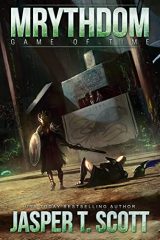 Mrythdom: Game of Time – Jasper T. Scott
Mrythdom: Game of Time – Jasper T. Scott
In a battle over an ancient elven relic, two powerful wizards accidentally abduct an “Elder” from the past.
While fleeing system patrollers in his ship, Aurelius flies through a temporal anomaly and crash lands on Meridia. This planet is nothing like the one he remembers. It’s full of strange, magical creatures, and peppered with the ruins of cities he once knew.
Armed with nothing but his damaged ship, Aurelius joins the wizard Gabrian on a dangerous quest to recover the stolen relic so that he can return to his time. Along the way, he encounters the greatest danger of all, one with the power to consume his mind, body, and soul.
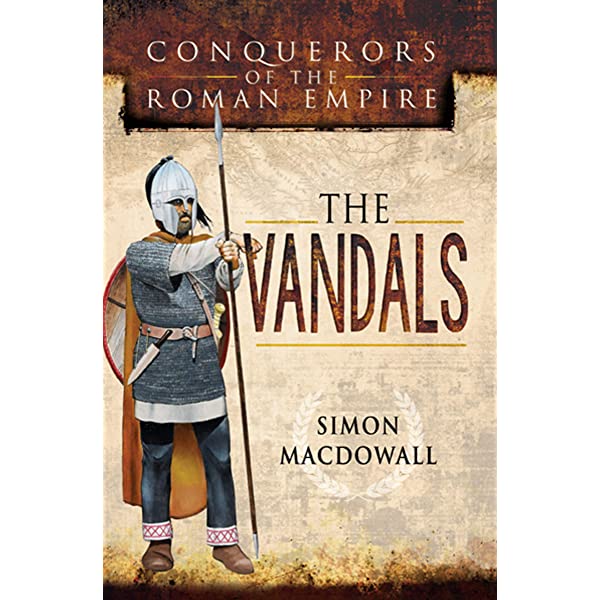 Years ago, reading Gibbon’s Decline and Fall of the Roman Empire, this passage on the Vandals excited my imagination:
Years ago, reading Gibbon’s Decline and Fall of the Roman Empire, this passage on the Vandals excited my imagination:
“The Vandals, who in twenty years had penetrated from the Elbe to Mount Atlas, were united under the command of their warlike king; and he reigned with equal authority over the Alani, who had passed within the term of human life from the cold of Scythia to the excessive heat of an African climate. The hopes of the bold enterprise had excited many brave adventurers of the Gothic nation, and many desperate provincials were tempted to repair their fortunes by the same means which had occasioned their ruin.”
The idea of a wandering tribe of barbarians who journeyed from Sweden to Carthage in North Africa is one of the great treks in history. I went so far as to get Procopius’ History of the Vandal Wars (Harvard Loeb Press). I immediately bought Torsten Cumberland Jacobsen’s A History of the Vandals a few years back. Read More
Sensor Sweep: Free Comic Book Day, White Dwarf, Chuck Dixon, James Bond
Monday , 8, May 2023 Sensor Sweep 2 CommentsConan (Essential Malady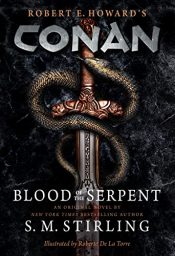 ): From this alone we can establish that both the publisher and the author are embarrassed by (or dislike) the source material. It is not clear who wrote the Afterword so I will assume this is a shared opinion. It would have been more honest to put this in the Foreword so a potential reader could have saved themselves the hassle of finding out. As opposed to “some” of today’s readers, the main reason Howard is seeing a resurgence in popularity is because readers are looking for exactly what they find within Howard. Far from “jarring”, they find his stories refreshing and exciting.
): From this alone we can establish that both the publisher and the author are embarrassed by (or dislike) the source material. It is not clear who wrote the Afterword so I will assume this is a shared opinion. It would have been more honest to put this in the Foreword so a potential reader could have saved themselves the hassle of finding out. As opposed to “some” of today’s readers, the main reason Howard is seeing a resurgence in popularity is because readers are looking for exactly what they find within Howard. Far from “jarring”, they find his stories refreshing and exciting.
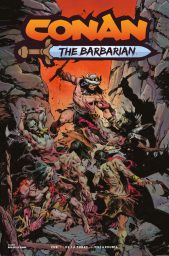 Comic Books (Kabooom): While I usually try and make it out to the shops for Free Comic Book Day, that journey took on a special urgency this year, thanks to the release of Conan The Barbarian #0. I’m something of an expert on all things sword and sorcery and a fan of Conan in particular. Also, while I did enjoy most of the offerings produced by Marvel Comics after they briefly took control of the Conan license in 2019, even the best of those stories was somewhat muted by the need to stick to a 15 and up rating.
Comic Books (Kabooom): While I usually try and make it out to the shops for Free Comic Book Day, that journey took on a special urgency this year, thanks to the release of Conan The Barbarian #0. I’m something of an expert on all things sword and sorcery and a fan of Conan in particular. Also, while I did enjoy most of the offerings produced by Marvel Comics after they briefly took control of the Conan license in 2019, even the best of those stories was somewhat muted by the need to stick to a 15 and up rating.
Firearms (Special Ops): Regarding firearms, China is known for its extensive range of products, from assault rifles to submachine guns. One such submachine gun is the Chang Feng 05, the CF-05. Developed in the early 2000s, this weapon is notable for using a high-capacity helical magazine on top of the receiver. This article will examine the CS/LS06, its features, development history, and military and law enforcement use. Read More
extensive range of products, from assault rifles to submachine guns. One such submachine gun is the Chang Feng 05, the CF-05. Developed in the early 2000s, this weapon is notable for using a high-capacity helical magazine on top of the receiver. This article will examine the CS/LS06, its features, development history, and military and law enforcement use. Read More
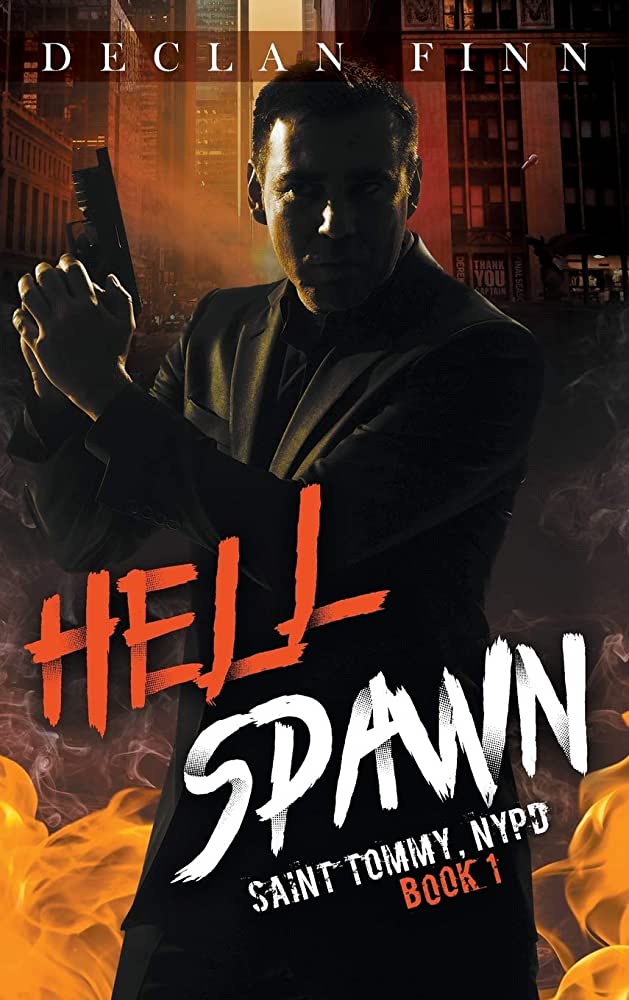 Urban fantasy is a more recent genre that I have not read much. Declan Finn’s Hell Spawn: Saint Tommy is the first in the series first published in 2018.
Urban fantasy is a more recent genre that I have not read much. Declan Finn’s Hell Spawn: Saint Tommy is the first in the series first published in 2018.
Detective Thomas Nolan of the New York Police Department starts his day bringing in a purse snatcher on the way to work. He smells something really bad. A 100 lb, 5’8” junkie in custody at the station goes berserk throwing police all over the place. Nolan subdues the junkie. Later Internal Affairs pays Nolan a visit as the junkie died in jail.
Events proceed quickly with the murder of a girl who goes to school with Nolan’s son. Then there are strange noises in Nolan’s house. Read More
Science Fiction and Fantasy New Releases: 6 May 2023
Saturday , 6, May 2023 Uncategorized Leave a commentEvery week, the Castalia House Blog spotlights some of the many new releases in independent, pulp, and web novel-influenced science fiction and fantasy.
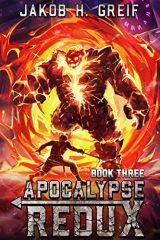 Apocalypse Redux #3 – Jakob H. Greif
Apocalypse Redux #3 – Jakob H. Greif
The [System] was intended to be humanity’s salvation. But it turned out to be a double-edged sword that could just as easily lead to its destruction.
Following a series of thankfully successful efforts in Europe, Isaac travels overseas to show the world new ways of leveling, gather new allies, and gain power in the Dungeons that have cropped up.
The whole affair would be perfectly doable, if it weren’t for the cult trying to destroy his work, the looming threat of another [System] Event, and the general, ever present danger of humanity’s darkest aspects and the monsters they spawn.
Will humanity stand proud and stop the first demons to emerge in this new timeline, or be swept away in a flood of hellfire?
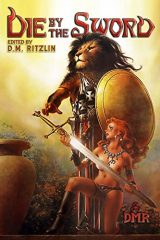 Die By the Sword – edited by D. M. Ritzlin
Die By the Sword – edited by D. M. Ritzlin
From the hells beneath the hells comes a brand-new anthology of sword and sorcery adventure! DMR Books presents yet another tome of fantastic tales by some of the most exciting authors in the field today. These scribes of blood and thunder maintain the legacy of classic sword and sorcery while expanding it into uncharted terrain.
Join Morcar as he supplicates a fierce goddess in a blood ritual to avenge his kin and reclaim his home… Come face-to-face with Roman legionaries and vicious dogmen in a haunted riverside adventure of Simon of Gitta… Ride with Duke Eldol as he steeps the Conqueror’s Spear in the blood of Saxon invaders and wages war on a corrupt Briton king… Hunt down a vampyre sorceress in an enchanted crystalline pyramid with Karnov, Phantom-Clad Rider of the Cosmic Ice… Whether to claim riches, a lusty wench or their own vengeance, the latest exploits of these and other mighty heroes come to vivid life within these pages. Experience the thrill as they slay and conquer in savage lands.
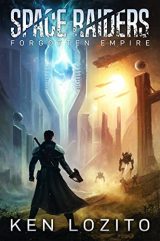 Forgotten Empire (Space Raiders #2) – Ken Lozito
Forgotten Empire (Space Raiders #2) – Ken Lozito
Lots of secrets are hidden within the galaxy, and Nathan Briggs is on the hunt for the biggest one.
A chance encounter with a strange creature puts Nathan on the trail of a lost civilization that predates everything else in the galaxy.
For thousands of years, many have abandoned the deadly search, but there are powerful forces that will do anything to possess the promised technological marvels that will change everything.
Determined to uncover the truth, Nathan joins the hunt, but when the race for the ultimate prize turns deadly, it will test the loyalty of his crew. To the victor goes the spoils, while the others become yet another tragic end, lost while pursuing the forgotten empire.
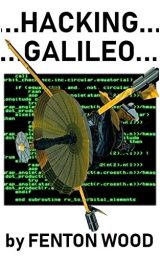 Hacking Galileo – Fenton Wood
Hacking Galileo – Fenton Wood
A story untold for over 30 years…
Teenage hacker Roger O. Miller made national headlines when he was arrested for hacking into NASA computers and hijacking an interplanetary probe. He told the authorities a wild story about a rogue asteroid on a collision course with Earth. Eventually, he recanted and admitted that he fabricated the whole thing.
Or did he?
For the first time, his closest confederate tells the real story of what motivated a group of brainy teenagers to create an illegal space program under the noses of the authorities. It all started with a radio experiment that led to an accidental discovery…
HACKING GALILEO is a tech memoir by an insider, full of ingenious exploits and fascinating details about the aerospace technology of the 1980’s.
Author and publisher alike are risking Federal retaliation by publishing this book. Is it a true account, or a clever work of fiction? What is the Terrible Secret of Space, and what does it have to do with the origin of the rogue asteroid? Read it for yourself–while you still can! Read More
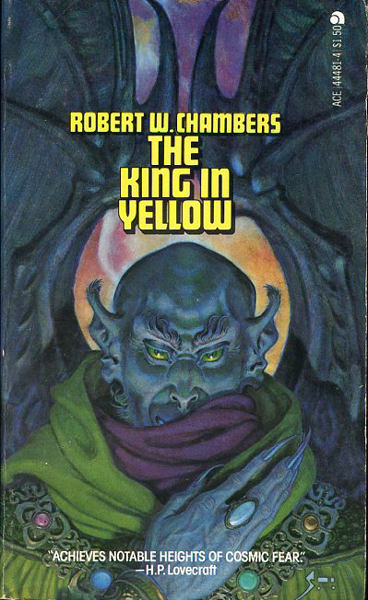
This is is a guest post by Matthew Pungitore:
Obsession in The King in Yellow by Robert W. Chambers; a Sentiment, or Review
By Matthew Pungitore
Introduction
Benvenuti, signore e signori, my ladies and gentlemen! I am Matthew Pungitore, and in this article, I’ll be briefly discussing, con amore, my personal opinions on the theme of obsession (or the similarities between obsession, lovesickness, illness, and art?), in Robert W. Chambers’ illustrious coup de maître: The King in Yellow. Mostly, this informal review is based on the general impressions I get from reading the full work as well as from the atmosphere its stories, as a gestalt, give off like gold-glittering smoke wafting up from yawning Acheronian chasms. In this, Chambers’ collection, obsession is a protean Chimera taking many forms, creating various offspring, and leaving transformative, psychic, or strange remnants (e.g., convalescence, ambition, admiration, adoration, jealousy, sorrow, impulsiveness, phobia, aversion, neurosis, anger, stalking, guilt, lovesickness, romance, or delusion); woe usually follows or is caused by those who are afflicted by the illness of obsession, of desire, of enchantment—a disease spread by battle, places, beauty, artworks, music, precious objects, or precious people; and sometimes two different types of love will suffer or clash against one another, as in a war, such as love for power versus romantic love, or romantic rivalries. Obsession, like vengeance, is another one of love’s many aspects, and to my eye, love and its maladies, whether love perverse or in ruins, forsooth are—O grim Love!—at the heart of this book. Read More
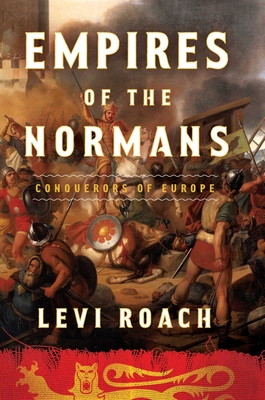 It is dangerous to methodically go through the military history section of Hamilton Books. It is irresistable when coming across some fairly new title drastically marked down. One recent addition from my last order is Levi Roach’s Empires of the Normans. Pegasus Books, August 2022, 301 pages, hardback. Originally priced $29.95, $7.95 at Hamilton Books.
It is dangerous to methodically go through the military history section of Hamilton Books. It is irresistable when coming across some fairly new title drastically marked down. One recent addition from my last order is Levi Roach’s Empires of the Normans. Pegasus Books, August 2022, 301 pages, hardback. Originally priced $29.95, $7.95 at Hamilton Books.
It can be difficult piecing together a coherent history of the Normans. There are books on William and 1066. You get some in books on Irish history, others on the First Crusade. John Julius Norwich wrote a history of the Normans in southern Italy that is long out of print. Roach covers it all. Read More
Comic Books (Bounding Into Comics): Heroic Signatures President Fredrik Malmberg recently explained why he chose to make a deal with Titan Comics to publish new Conan the Barbarian stories despite receiving multiple requests from other publishers.
Malmberg recently explained why he chose to make a deal with Titan Comics to publish new Conan the Barbarian stories despite receiving multiple requests from other publishers.
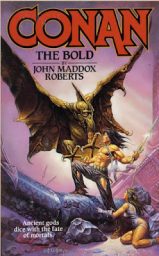 Conan (Paperback Warrior): John Maddox Roberts is a Vietnam War veteran that served in the US Army from 1967 until 1970. His first novel, The Strayed Sheep of Charum, was published in 1977. Specializing in historical mystery and adventure, Roberts authored the successful Ancient Rome series SPQR, published as 13 installments between 1990 and 2010. He also authored titles like Stormlands, Hannibal, Space Angel, Cingulum, Island Worlds, and Falcon. My experience with the author is his contributions to the Conan pastiche novels published by Tor.
Conan (Paperback Warrior): John Maddox Roberts is a Vietnam War veteran that served in the US Army from 1967 until 1970. His first novel, The Strayed Sheep of Charum, was published in 1977. Specializing in historical mystery and adventure, Roberts authored the successful Ancient Rome series SPQR, published as 13 installments between 1990 and 2010. He also authored titles like Stormlands, Hannibal, Space Angel, Cingulum, Island Worlds, and Falcon. My experience with the author is his contributions to the Conan pastiche novels published by Tor.
Fantasy (Grognardia): Wellman also penned six stories about Kardios, a survivor of Atlantis,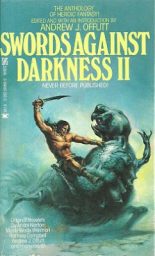 the last of which was published in 1986, just months after the author’s death. Though he first appeared in 1977, Wellman had apparently conceived of Kardios sometime during the 1930s, but had trouble selling him because Robert E. Howard had beaten him to the punch with Kull. However, Andrew Offutt (and, later, Gerald W. Page, Hank Reinhardt, and Jessica Amanda Salmonson) recognized the uniqueness of the character and it’s through their efforts that we can read about his exploits today. Read More
the last of which was published in 1986, just months after the author’s death. Though he first appeared in 1977, Wellman had apparently conceived of Kardios sometime during the 1930s, but had trouble selling him because Robert E. Howard had beaten him to the punch with Kull. However, Andrew Offutt (and, later, Gerald W. Page, Hank Reinhardt, and Jessica Amanda Salmonson) recognized the uniqueness of the character and it’s through their efforts that we can read about his exploits today. Read More
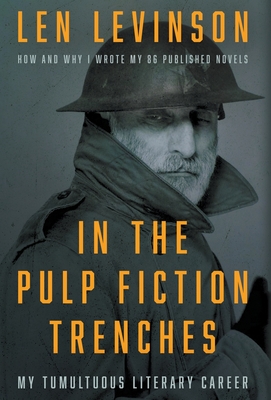 There used to be something called the paperback midlist. The midlist were books that were not best sellers but made some profit. Used to be publishers made money by making a little money on many titles. Not so much now.
There used to be something called the paperback midlist. The midlist were books that were not best sellers but made some profit. Used to be publishers made money by making a little money on many titles. Not so much now.
There were writers who wrote paperbacks who started out in the pulp magazines: Louis L’Amour, Gardner F. Fox, Gordon D. Shirreffs, and a lot of the science fiction writers. Then there were writers who started after the pulp magazines and were only in mass market paperbacks: Ben Haas, Ralph Hayes, Marvin Albert, Peter McCurtin, and Len Levinson.
In the Pulp Fiction Trenches is Len Levinson’s biography on how he wrote 86 novels. This was a fascinating book to read on the inner workings of publishing. Read More